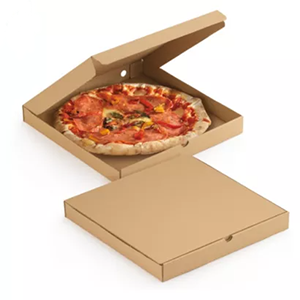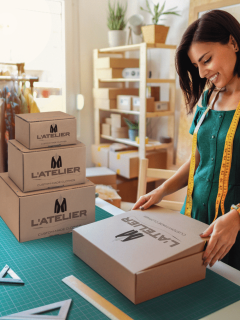True fan love is something unbreakable. Something eternal, something for life. And not infrequently it is inherited: Dad a BVB fan? Then it is very likely that the offspring will also feel black and yellow. Or blue… Whether it’s the same or completely against: In any case, real emotion is involved. And therein lies the secret why fan love lasts a lifetime, even if the success of the favourite club may leave something to be desired at times.
Some brands succeed in building this kind of unbreakable and even cross-generational bond with their customers. What is the secret behind such success? Are product quality, product benefits and good service enough?
Emotions create lasting memories
If I have experienced something, I have associated it with emotions. If a place, an activity, a person, an experience gives me a good feeling, it is enough later to be reminded of this situation by a trigger to revive the positive feelings. An example: the smell of bolognese sauce can catapult you back to mum’s kitchen in a matter of seconds, years younger.
Emotions as a driving force for action
Marketers in turn make use of positive emotions as triggers for purchase decisions. If one succeeds in emotionally charging one’s own brand image through consciously controlled marketing measures, this emotion will also unconsciously influence the purchase decision. Purchase decision that takes place unconsciously influence. Reaching for the shelf or clicking becomes more likely – in combination with rational factors such as high product quality and the utility value of the individual products or services, even very likely.
Excursus: Facial Feedback
Emotions influence physical reactions. But this interaction also works the other way round: the facial feedback hypothesis, for example, can be proven in an experiment. If you smile for at least 60 seconds (putting a pencil between your teeth helps ...), the mechanical stimulus alone will influence your inner feelings.
Online trade and emotion?
But: how do I create emotion without direct and immediate customer contact? It is an advantage of classic retail to trigger emotions through multi-sensory experiences. If I have the customer in the shop, I have completely different possibilities to address his senses: seeing, feeling, smelling, tasting… We know from psychology: The more senses I address with my message, the more lasting it will be learned.
Visual is trumps – even better: Video
For online retailers, digital branding is the only option left. The good news: humans are visually focused by nature. We perceive 83% of all information through our sense of sight. This value may have even increased due to learned behaviour: The ubiquitous presentation of visual stimuli via smartphone display contributes to this.
So images are the way of choice to reach customers. Even better: Videos! Because the sense of hearing is considered the second most important sense of perception, accounting for 11% of the information perceived. New technologies also hold potential to address customers’ multisensory perception. 360-degree videos, AR and VR make the brand an experience.
Learning from the greats
Now no time of the year is more “emotional” than the run-up to Christmas. At the same time, the Advent season is the time of the year with the highest turnover (especially in online retail). It’s only logical to take advantage of this simple equation:
Christmas = emotion
Emotion + video = strong brand loyalty = increased likelihood of purchase
In the meantime, the Christmas video has become an integral part of communication for many big brands or retailers. And the companies pay a lot for them: the emotional mini-films are up to 90 seconds long, and they run in prime time. Like the singing boxes from Amazon, for example.
A series of these successful videos from last year:
https://www.marketinginstitut.biz/blog/weihnachtswerbung/
The singing Amazon box
Now in its third year, Amazon and the Lucky Generals agency are sending the smiling and singing shipping boxes on their way. The message: Amazon is in every living room on Christmas Eve. And creates a Christmas atmosphere there. With every good-humoured parcel that the good-humoured parcel messenger delivers to good-humoured customers, the… that’s right: mood increases! “Coming home for Christmas” in its purest form.
It is difficult to say how much the atmospheric video contributed to the increase in sales. But one thing is certain: Amazon can certainly afford to pay a little for the emotional films. With a Quarterly sales of 69.98 billion US dollars worldwide (19.9 billion US dollars annual turnover in 2018 in Germany alone), the company has the means to do so.
The campaign is polarising, but it works. And it tempted other big players to react: Ebay countered the campaign, admittedly very glibly and wittily, with the slogan: Just hold the cardboard! But even all the critics who judge on a cognitive level that the Amazon video is sentimental and annoying probably cannot escape its effect on the subconscious sensibilities: The longings it seeks to serve are too deep. Family, home, Christmas…
The lonely Edeka man
But the maths doesn’t always add up:
The 2015 campaign by food retailer Edeka, known as #heimkommen, even had the effect of inhibiting sales, according to Neuromarketing study even inhibited sales! What went wrong?
The scenario of a lonely old man faking his own death in order to finally get a visit from his family scattered around the world again probably triggers similarly strong, if not stronger emotions. However, it touches feelings and fears within us that we would much rather leave untouched. So it leaves us with a sense of trepidation rather than a sense of Christmas peace. And we take this subconscious, negative link with us when we go shopping.
Multisensory is better: this is the role of packaging!
Online retailing may still be so visual – at some point the moment comes when the goods are also haptically convincing. And the first physical contact takes place with the packaging. Far too often, customers still experience an immense “break” in brand communication here. While the actual product packaging is included in the marketing considerations and designed according to the brand message, the demands on the shipping packaging are often subject to purely economic aspects: It has to be stable, safe and robust (true!), it has to be cheap (also true), it has to fit into the internal logistics processes (of course!).
But it also has to: convince. And it has to do so at the point of delivery: the front door. Of course, the decision to buy has long been made here. If the customer is convinced by the goods, he or she will certainly not return the product just because the shipping box does not fit the brand communication. But: a bad, unconscious feeling remains, a negative link similar to the Edeka phenomenon.
Unthought-out standard packaging, a shipping carton that is too big and contains an unnecessary amount of filling material, a carton that is not user-friendly to open – all these things are remembered negatively and do not convey the carefully thought-out brand message, but rather one thing above all: the feeling of a lack of appreciation. Towards the product, but also towards the customer.
The right packaging as a means of reducing post-purchase dissonance
If, on the other hand, the brand message is also consistently implemented in the shipping packaging, this has the effect of a Confirmation for the purchase decision. It doesn’t have to be extraordinary (expensive) at all. You should be careful with the shape of the shipping box, for example. Experimenting here is bound to catch the customer’s eye, but unfortunately also means more difficult handling and higher postage costs. But: simple printed shipping boxes, a box with a surprisingly different opening, a box in an exclusive colour or a small, different detail such as a label sticker – you are already doing a lot right.
Everything has been done right if this message reaches the buyer:
“I have chosen the right product/supplier. I have received a quality product that deserves to be packaged with value.”
The hedgehog and the packaging chips
Naturally, we were particularly touched by the Christmas campaign of Erste Bank and Sparkasse: A little hedgehog, who can't make friends because of his spines, arouses the pity of the other animals. The solution: they give him a cardboard box with flo-Pak filling material, which turns the hedgehog into a completely harmless cuddly ball. See for yourself:















